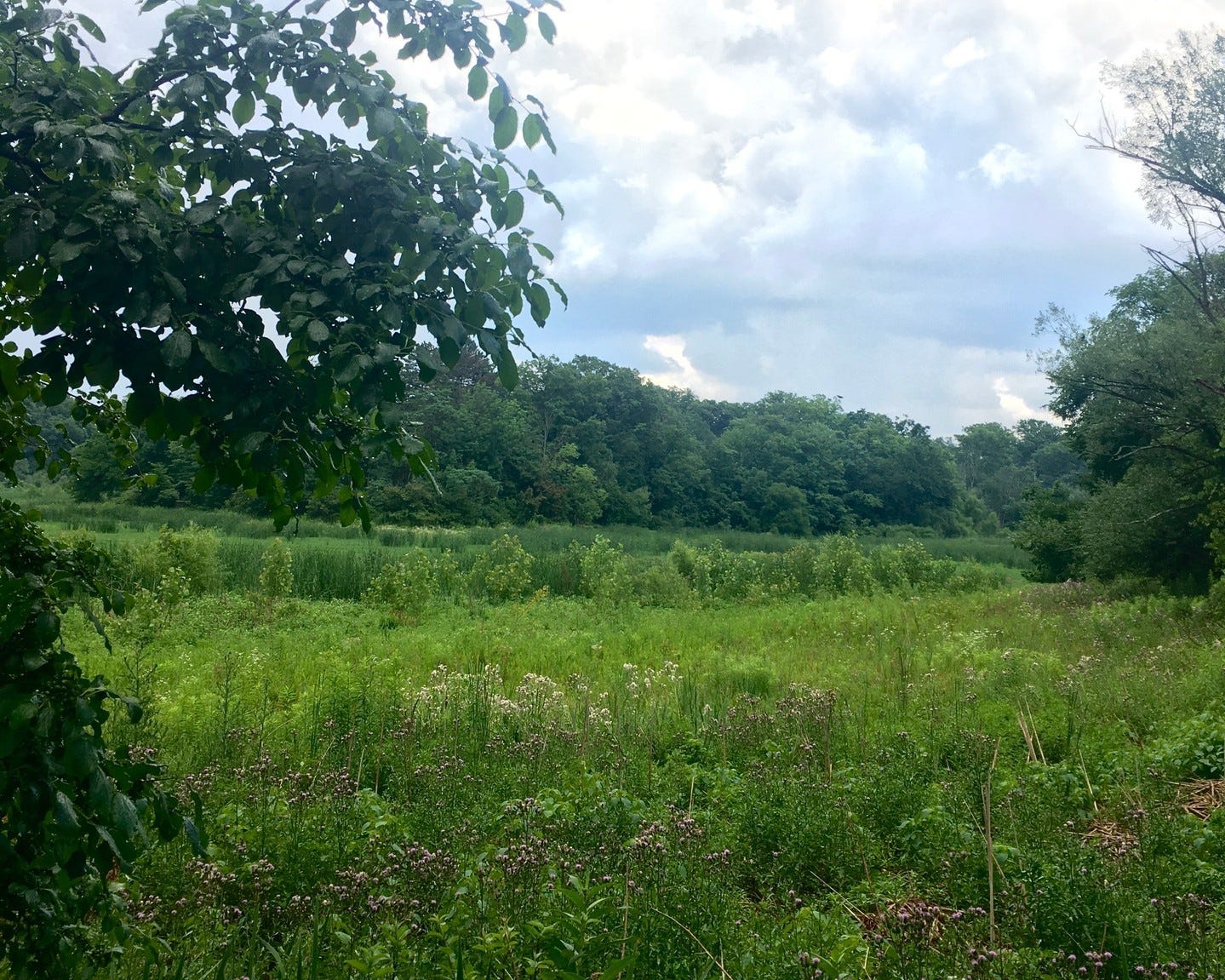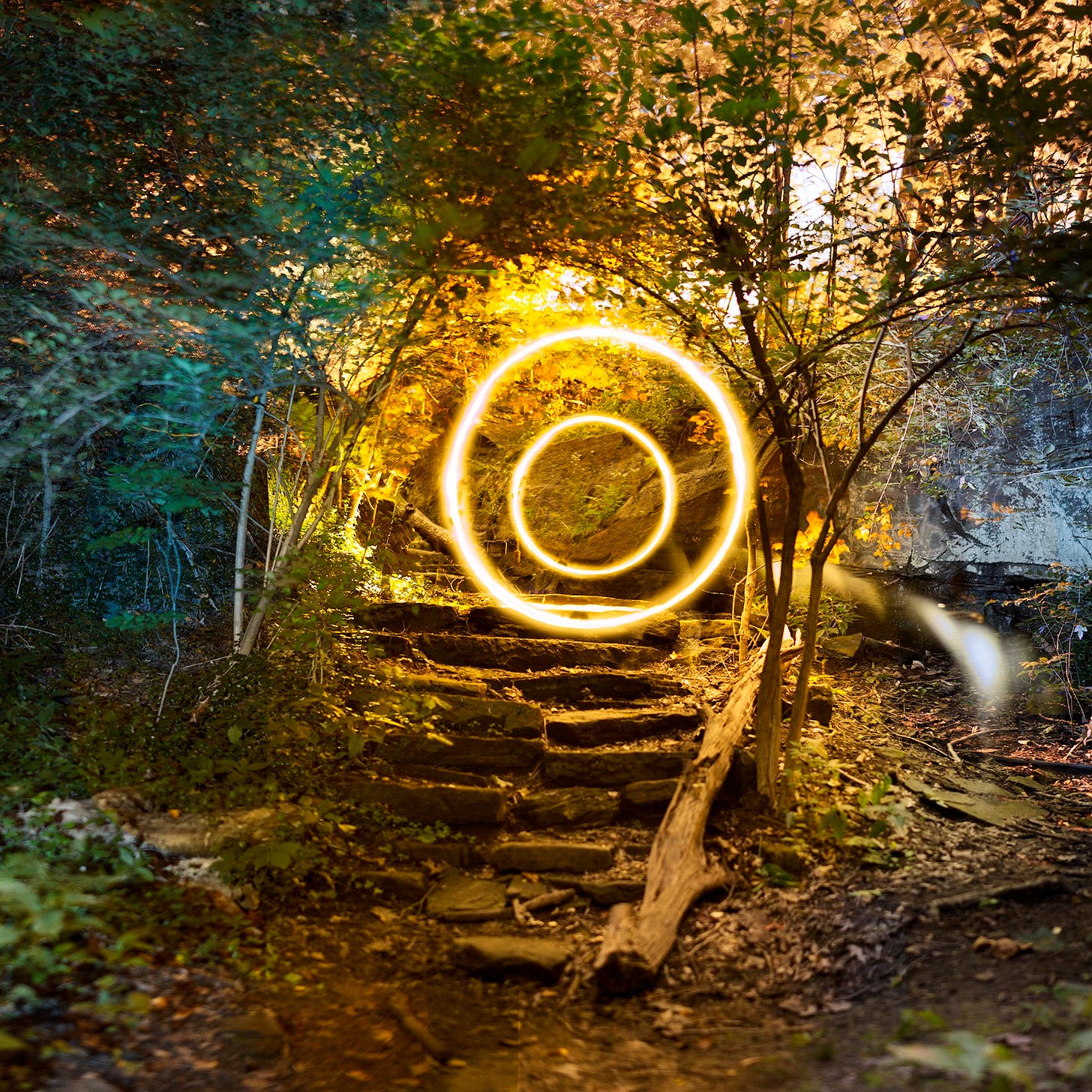There are a handful of locations that have drawn me in so deeply that I’m almost obsessed with them. I constantly return just to check in and see how the space has changed. I need to know what’s shifted since the last time I was there. Sometimes the question is along the lines of how did last night’s storm / last winter’s thaw / last year’s drought, etc. affect the area? Other times, its sating my curiosity to see the minuscule or, at times, remarkably dramatic changes that occur overnight. I will do this regardless of my having plans to shoot a piece there. Though, more often than not, I’m observing the space while also cooking up ideas for photographs.
Horseshoe Lake (falling within the boundaries of both Cleveland Heights and Shaker Heights in Cleveland, Ohio) is at the top of this list of so-called “fascination locations.” I live nearby, making my routine of habitual check-ins more manageable. One of the reasons Horseshoe Lake and its surrounding environs have held my interest for so many years is that the lake itself is artificial, created when Doan Brook was dammed by the local Shaker community nearly two hundred years ago. And yet, it is at the center of a heated, years-long debate over “natural spaces,” and how we’ve come to define them.
For “Horseshoe Lake (July 2021)”, I was thinking about a Mobius Strip to create a visual illusion to interpret what’s happening in this particular space. Signs that read “Save Horseshoe Lake” seem to forget that this was never a natural body of water to begin with…
The Shakers first formed their North Union community in 1822, damming Doan Brook in 1852 a second time to power a new woolen mill and thus creating Horseshoe Lake in the process. The first dam built was further west along Doan Brook, used to power a saw mill, and created Lower Shaker Lake, which still exists. While the Shakers peaked in the 1850s, numbers dwindled following the Civil War, and the North Union community disbanded in 1889, with the few remaining members moving to other Shaker communities. But the two lakes they engineered to power their mills remained.
A few years later, Horseshoe Lake was donated to the City of Cleveland as part of 279 acres of parkland that was owned by the Buffalo Real Estate Company. Following the route of Doan Brook, this established an almost continuous stretch of parks from Shaker Heights to Lake Erie. Horseshoe Lake Park was inaugurated after it was landscaped through WPA efforts in the 1930s and then renovated between 2004 and 2007 by the city of Shaker Heights to make the park more accessible with more amenities for families and recreation.
In 2018, Horseshoe Lake was drained after a sinkhole was found along the dam by the Northeast Ohio Department of Natural Resources. After the dam’s condition was assessed, it was determined that removal of the dam would be the safest solution for flood-control and that to rebuild the dam would be an incredibly expensive undertaking for the city. The Northeast Ohio Regional Sewer District proposed to remove the dam and therefore remove Horseshoe Lake, upgrade the failing dam at Lower Shaker Lake, preserving that lake, and restore Doan Brook to reestablish a floodplain in the area. Their proposal was made public in June 2021. It’s been the subject of intense debate in the local community ever since.
The Shaker Historical Society is in support of the dam removal proposal, stating that “as historians, we would be remiss to ignore the thousands of years of Indigenous history and stewardship of the land before the Connecticut Western Reserve was occupied and before the North Union Shakers dammed Doan Brook.” In their statement of support, the Nature Center at Shaker Lakes wrote, “replacing Horseshoe Lake with natural, sinuous channels and a vegetated floodplain will provide natural flood control and restore valuable native habitat.” Furthermore, the Doan Brook Watershed Partnership has pointed out, “The instream and riparian habitats of the North and Middle branches can be restored to a high degree if the Horseshoe Lake dam is removed. The Doan Brook will have the opportunity to flow as it once did for over 14,000 years in this location.”
Those fighting for the preservation of Horseshoe Lake tend to only consider its aesthetic value, and not the environment. They want to restore the dam to let the space go back to what they’re calling its natural state, but the space wasn’t originally a lake. And the Horseshoe Lake that recently did exist wasn’t a healthy body of water. It didn’t have as much flow as a natural lake would and invasive species weren’t addressed. People are trying to argue that it’s simply a “natural space,” but it’s a deeply augmented and misinterpreted part of the natural world. I see the whole situation as a paradox. The community’s not well informed about what is really going on, why the land that was Horseshoe Lake needs to be a nature preserve, and why it needs to be taken care of as such.
The debate is an ethical one, whether nature is valuable only as a means to serve the purposes of humans, or whether it might be valuable for its own sake. Even in thinking about the concept of value, “value” in and of itself is a mostly human concept. Much of the non-human world does not experience value. Still, I align with the philosophies of John Muir and the guardianship teachings of David Suzuki. Everything is tied together. Humans are not above nature, be it technology, religion, or intellect. Especially intellect. We are tied to the environment, and whatever it is we do to the environment, we do directly to ourselves.
On this note, I think words like “nature” and “landscape” are tricky things. In spoken English, we’re quick to use them in place of the word “environment,” but they are not all the same. The word “environment” can encompass all of the components of a place: human and non-human, geology, the plant world, and animals. On the other hand, the words “landscape” and “nature” are symbolic constructs created by humans. They imply that a location is something separate from humans. It’s a place to be looked at, controlled, manipulated, made into poems. Even the choice of humans to leave a place alone or “re-wild” it, as in the case of Horseshoe Lake, is our choice.
The Northeast Ohio Regional Sewer District’s (NEORSD) dam removal proposal was endorsed by the Shaker Heights City Council on October 2, 2023. The NEORSD has been working with representatives from Cleveland Heights and Shaker Lakes throughout the process and is in the final stages of the project’s pre-design phase. Stay tuned for how this all unfolds, I’ll surely have opinions and new work made around Horseshoe Lake to share.
Wishing you all well.
- Barry







Barry, you are quite wrong. Those fighting for Horseshoe now and 50-some years ago were not focused on its aesthetic value, but on its natural value, and without that lake, it would not be as valuable as a natural area. As a teen, I helped in the freeway fight and a student-led pollution study of the lakes and brook. I knew two of the principal fighters well--Mary Elizabeth Croxton and Jean Eakin. Eakin was indeed a biologist, although typical of the day, she was not employed outside the home. These women's concerns were INDEED for the natural environment, especially, in Eakin's case, for the birding mecca the lakes were and a reason for establishing the Shaker Lakes Nature Center. And Mrs. Croxton continued after the fight was won with a Parks committee. You need to understand that the greatest Ohio birding spots for migrating waterbirds are not "natural" but are created with dams and wiers, such as Ottawa National Wildlife Refuge. Horseshoe birding records are truly remarkable, and they also reveal a somewhat differnt mix from that at Lower Lake. Sadly, NEORSD has helped the Nature Center, DBWP, and the Shaker Historical Society promulgate lies about Horseshoe's value easily swallowed by the natural history ignorant. It started with touting the lake's destruction as promoting a return to "natural the way it was 10,000 years ago," which the Nature Center's leader, clearly uneducated in Ohio natural history, helped promulgate. That's when the glaciers receded, and the area was tundra at the time. Nothing NEORSD proposes will lead to a "natural" environment. It will be two buldozed channels wtih gravel, invasive plants, lots of deer as vectors of Lyme disease, and a concrete road through the middle. I urge you to read a bit more about the potentail for "nature" in the destructive plans here. https://coolcleveland.com/2021/10/commentary-natural-gaslighting-the-future-of-horseshoe-lake/ Note that at the time, a "marsh" was being touted (but no longer), and Horseshoe hosted plenty of marsh birds. NEORSD has not only lied but has also done a bait-and-switch.
As for Shaker Historical--well, that's what it was SUPPOSED to be--to preserve SHAKER history, not the history of Shaker Heights. The historically ignorant historical society doesn't know that there were no permanent indigenous settlements in the area when the Shakers came, although there were sproadic camps, from about the mid 1600s after the Iroquois (who were not based here but mainly in New York) burned the Erie's villages (and presumably slaughtered them). If the goal is to restore Native American lands, fine, but that means we Heights residents should raze our homes and businesses in addition to the lake and get out of here. Historical preservation of the Shaker's lake is indeed historically valuable, since the Shakers modeled values we still need to learn today, most notably absolute racial and gender equality.
And how ironic that you as a photographer are dismissive of Horseshoe's "aesthetic" value. That value goes well beyond "pretty," to playing an important role in mental well-being, something psychologists, sociologists, and urban planners have been recognizing and writing about of late.